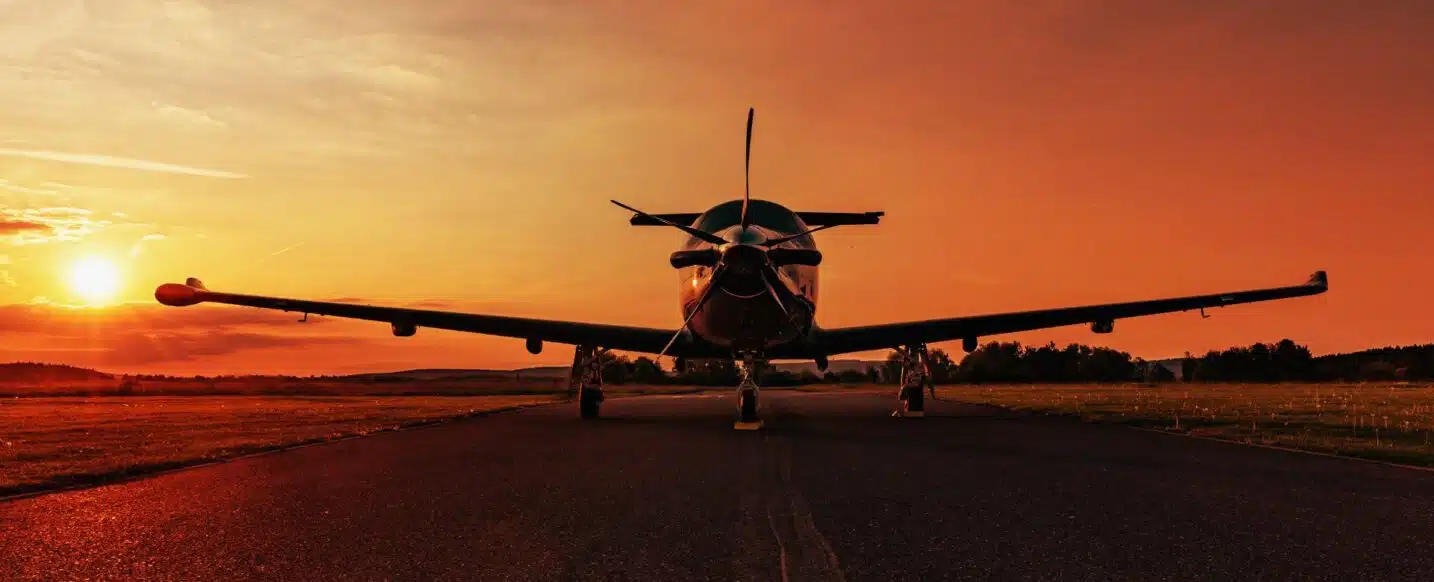
Pilatus PC-12 vs. Piper PA-46: A Passenger Perspective on Private Aviation
When it comes to private aviation, the Pilatus PC-12 and the Piper PA-46 are two popular choices. Both offer a step up from commercial flying, but they cater to different needs and preferences. From a passenger’s point of view, several key factors differentiate these aircraft, influencing the overall travel experience.
Cabin Size, Comfort and Amenities
The Pilatus PC-12 and the Piper PA-46 offer distinctly different experiences when it comes to passenger comfort and space.
The PC-12 is renowned for its generous cabin, comfortably accommodating 6 to 8 passengers. The interior boasts high-quality materials, comfortable executive seats, and a completely flat floor, creating a luxurious and spacious atmosphere. Passengers enjoy ample legroom, making even longer flights more enjoyable. Furthermore, the PC-12 includes a fully enclosed lavatory located at the front of the cabin – a significant advantage for longer flights.
The Piper PA-46 offers a more intimate cabin experience, typically seating 4 passengers in a compact layout. The leather seats are arranged in a club configuration with a folding table, ideal for smaller groups or business meetings. Although it lacks the PC-12’s spaciousness and does not include a built-in lavatory – a key consideration for longer flights – the PA-46 prioritizes passenger comfort within its size limitations. It’s also worth noting that the PA-46 is generally a more economical aircraft option to charter.
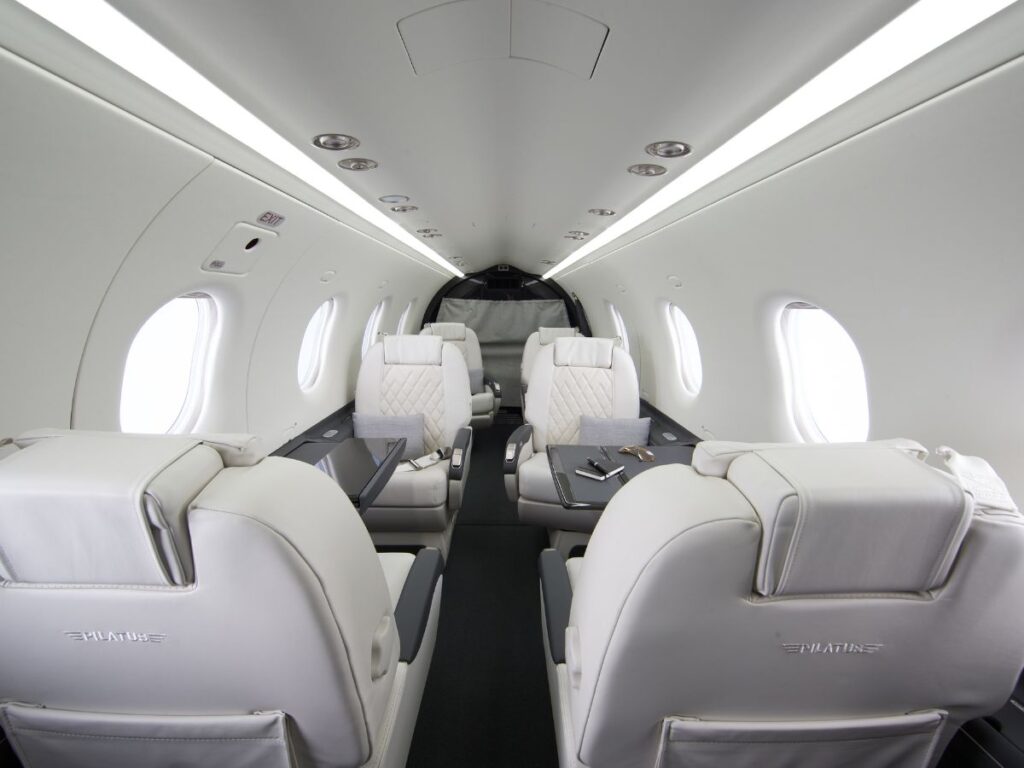
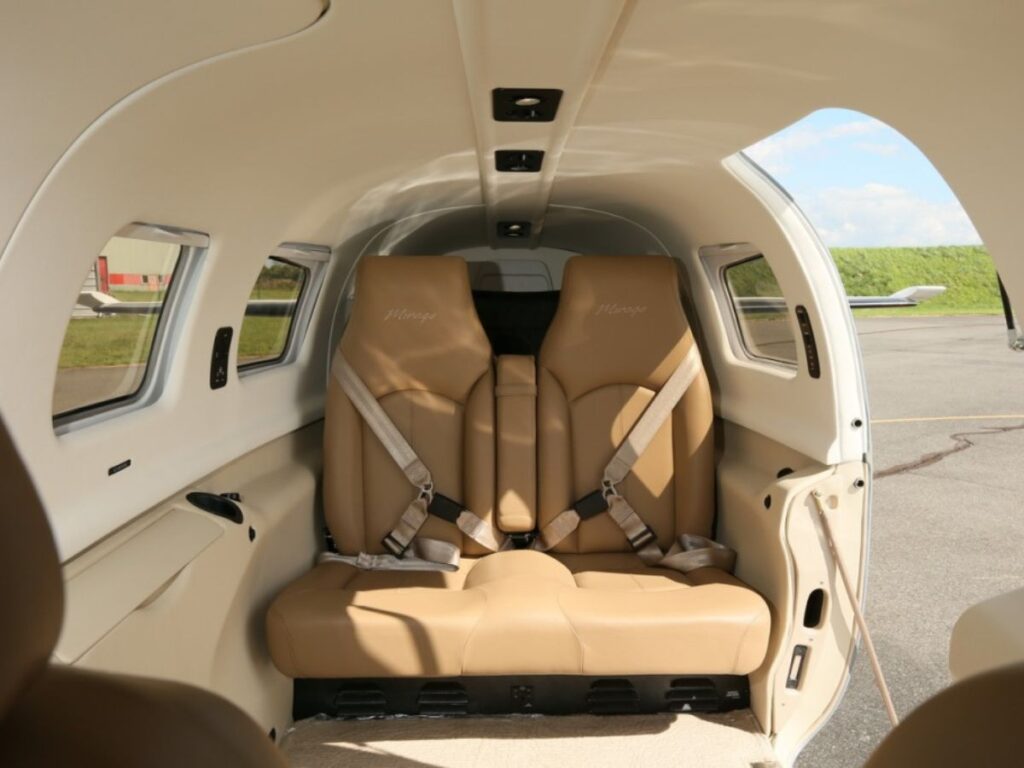
Baggage Space
When it comes to carrying luggage, the Pilatus PC-12 and Piper PA-46 differ noticeably.
The PC-12 offers a significantly larger baggage hold. This generous space allows passengers to pack more luggage. With some types being equipped with a large cargo door on the side and the option to remove the last row of seats, the PC-12 offers the ability to transport over-sized items or specialized equipment, making it a good choice for trips where extra cargo is necessary.
The Piper PA-46, while not as spacious as the PC-12, still provides a dedicated luggage area. This space is sufficient for several medium-sized suitcases, suitable for typical travel needs. However, passengers with more extensive luggage requirements might find the PA-46’s capacity limiting compared to the PC-12.
| Pilatus PC-12 | Piper PA-46 | |
|---|---|---|
| Popular routes | Amsterdam – Ibiza London – Milan Vienna – Palma | Nice – Milan Rotterdam – Munich London – Paris |
Piper vs Pilatus Range and Speed
When comparing the range of the Piper PA-46 versus the Pilatus PC-12 , their range and speed are important factors to consider.
The PC-12 has a cruise speed of approximately 500 km/h, enabling it to cover significant distances efficiently. This speed, combined with its impressive range, makes non-stop flights a realistic option, saving valuable time and adding convenience for passengers. This makes the PC-12 a good choice for longer trips.
The Piper PA-46, while also a capable aircraft, presents a different profile. It’s recognized as a fast and comfortable single-engine aircraft, suitable for a variety of missions. While specific speed figures may vary depending on the PA-46 model, it generally offers a competitive cruise speed within its class. However, its range is typically less than that of the PC-12, meaning more frequent stops may be necessary for longer journeys.
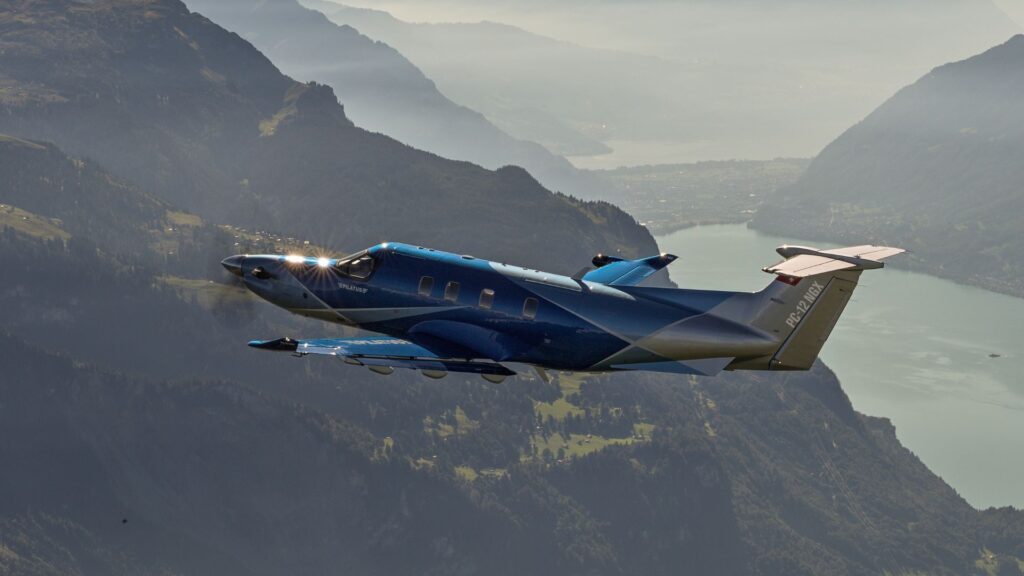
Overall Travel Experience
When considering the overall travel experience, both the Pilatus PC-12 and the Piper PA-46 offer distinct advantages.
The PC-12 stands out for its versatility, bridging the gap between the comfort of a Light Jet and the rugged capabilities of a Turboprop. Compared to a Light Jet, the Pilatus PC-12 can fly at airports with shorter runways, meaning that it can offer connections to more destinations than the Light Jet. Furthermore, the PC-12 is offers exceptional soundproofing, creating a quieter and more relaxed cabin environment.
The Piper PA-46, while not offering the same level of quietness, presents a flexible and economical alternative. Its ability to access smaller airfields compared to the Pilatus PC-12 opens up a wider range of destinations, often closer to final destinations. Despite being a cheaper option and able to arrive at more airports, the PA-46 does not offer the same level of soundproofing as found on the PC-12. This means that wearing a noise canceling headset is recommended for a comfortable travel experience.
Aircraft Rental Price
The cost of chartering a Pilatus PC-12 versus a Piper PA-46 reflects their respective positions in the private aviation market.
The PC-12 commands a higher price tag. Both the initial purchase cost and the ongoing operational expenses, including fuel, maintenance, and crew fees, are higher for the PC-12. This translates to a more expensive charter rate.
On the other hand, the Piper PA-46 presents a more economical option for private air travel. Both the initial purchase cost and the ongoing operating expenses are lower than those of the PC-12. This makes the PA-46 a more budget-friendly option when it comes to charter rates for private flying.
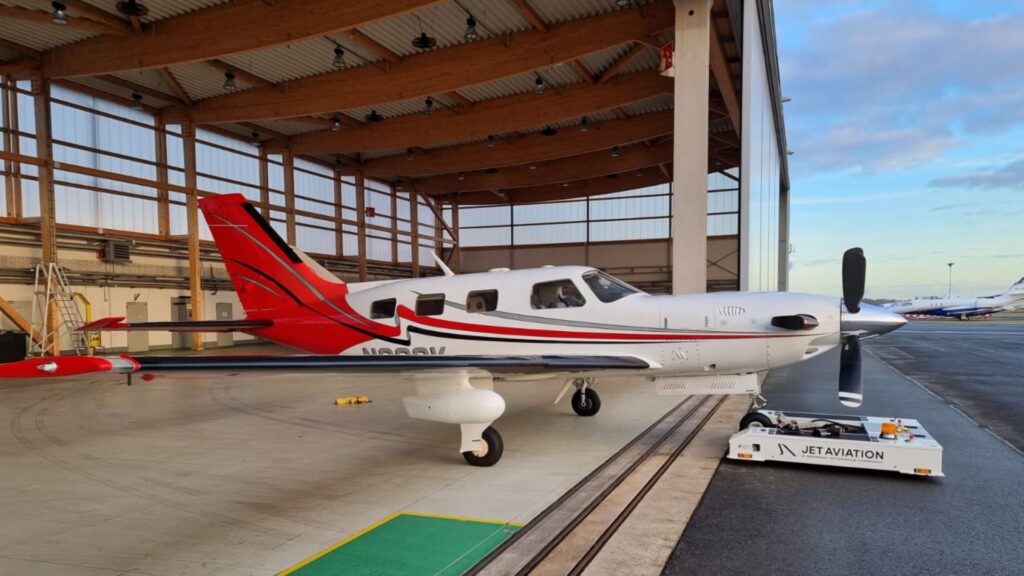
Conclusion
The Pilatus PC-12 and Piper PA-46 are popular choices for private air travel, each offering distinct advantages.
The PC-12 stands out in cabin size, comfort, and baggage capacity. This private aircraft also offers greater range and speed, making it suitable for longer journeys. However, this comes at a higher charter cost.
The PA-46, while more compact and not being equipped with an onboard lavatory, provides a more economical entry point into flying private. Its smaller size allows access to more airfields, and its lower operating costs translate to more affordable charter rates.
Choosing between the two depends largely on your budget, travel needs, and desired level of comfort and amenities.
Aircraft Comparison Chart
| Pilatus PC-12 | Piper PA-46 | |
|---|---|---|
| Cabin height | 1.47 m | 1.19 m |
| Cabin width | 1.52 m | 1.27 m |
| Cabin length | 5.16 m | 3.76 m |
| Passenger seats | 6 to 8 | 4 |
| Luggage allowance | 6 | 2 |
| Cruising speed | 520 km/h | 500 km/h |
| Maximum range | 3,250 km | 1,850 km |
| Minimum runway | 1,010 m | 855 m |
| Charter price per hour | 2,700 EUR | 1,600 EUR |
Are you interested in chartering a Piper PA-46, Pilatus PC-12 or other Private Jet?
Our aircraft charter experts are happy to assist you with your questions or to find the right type of private jet for your next flight.



